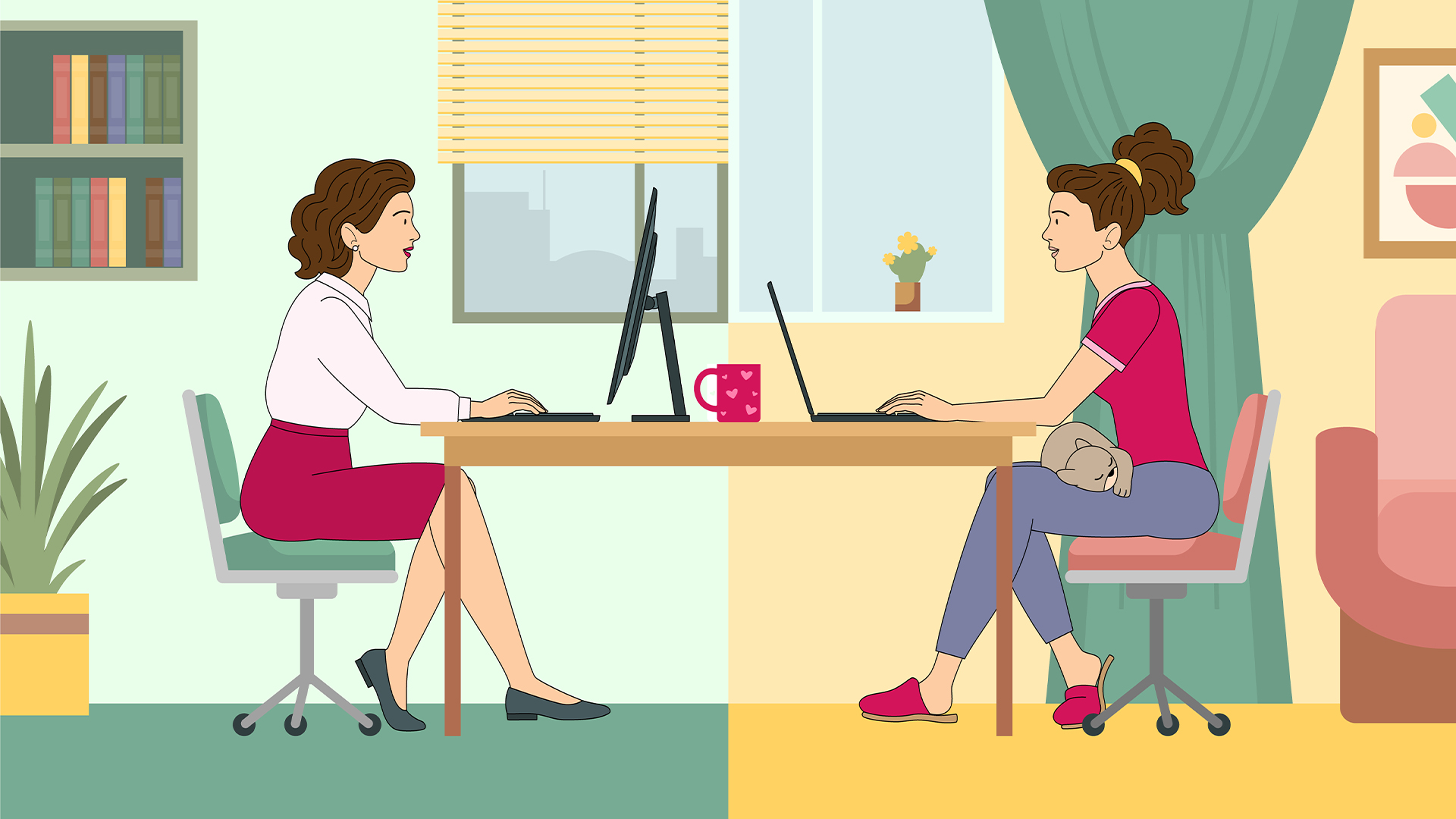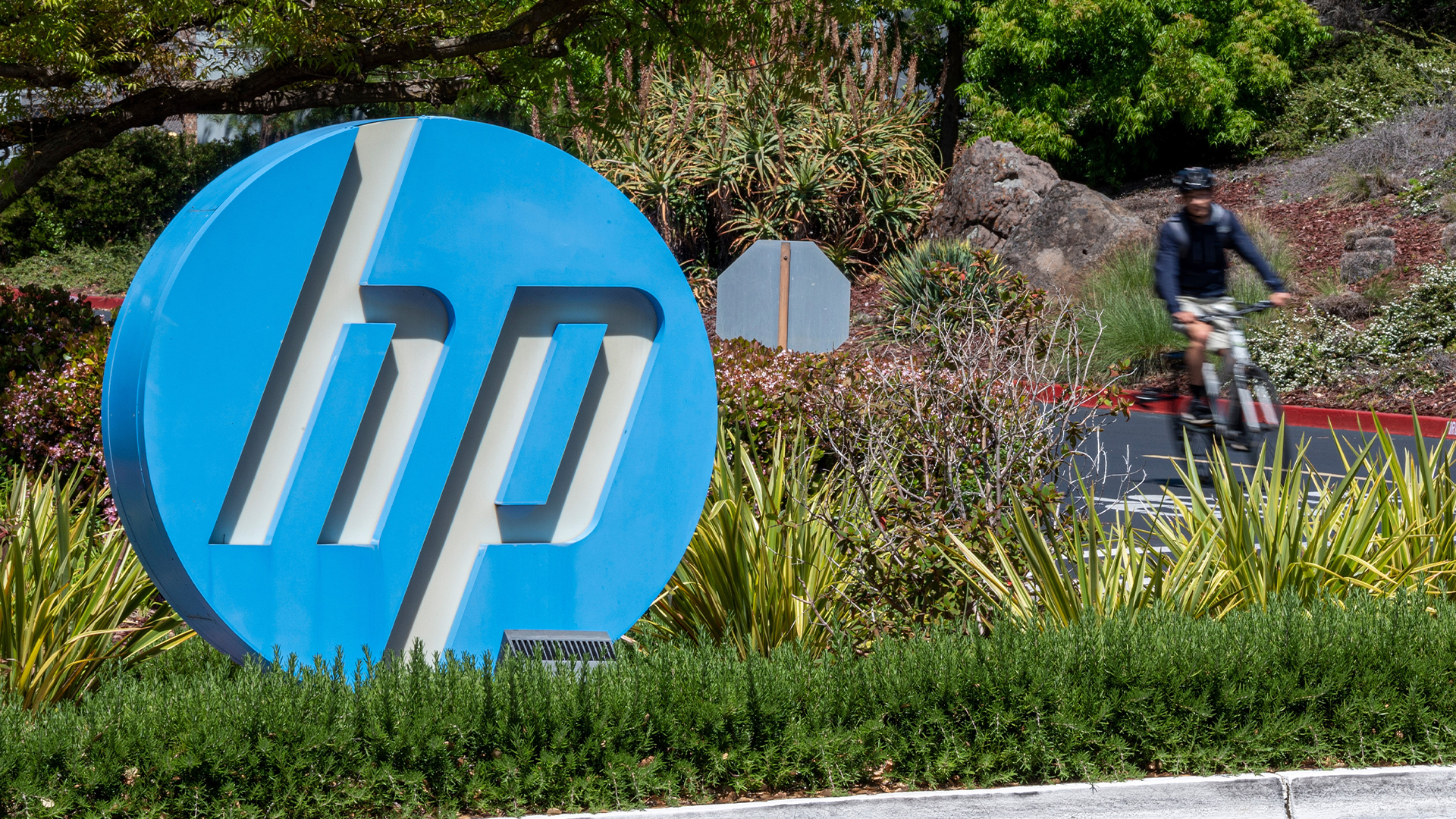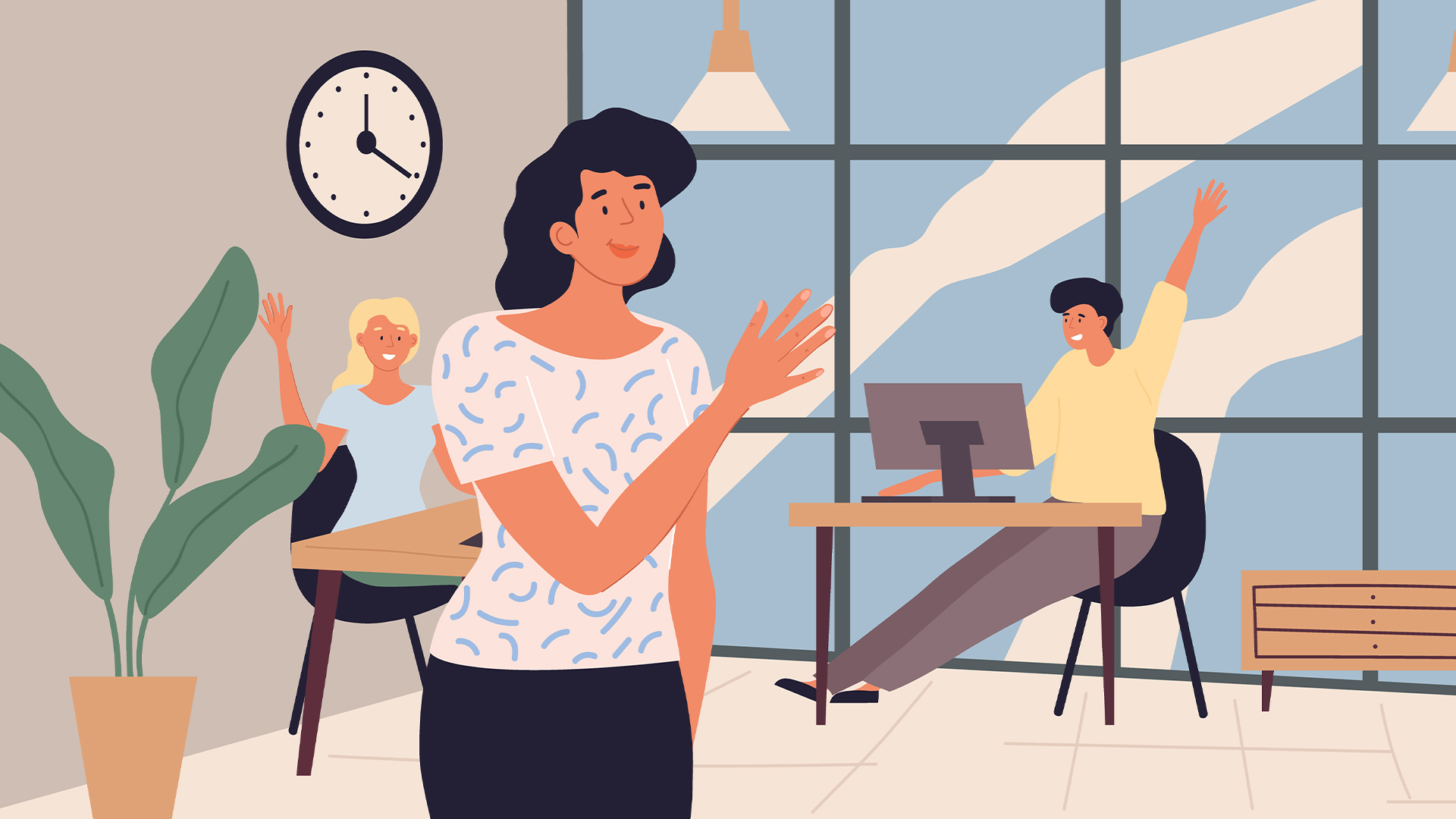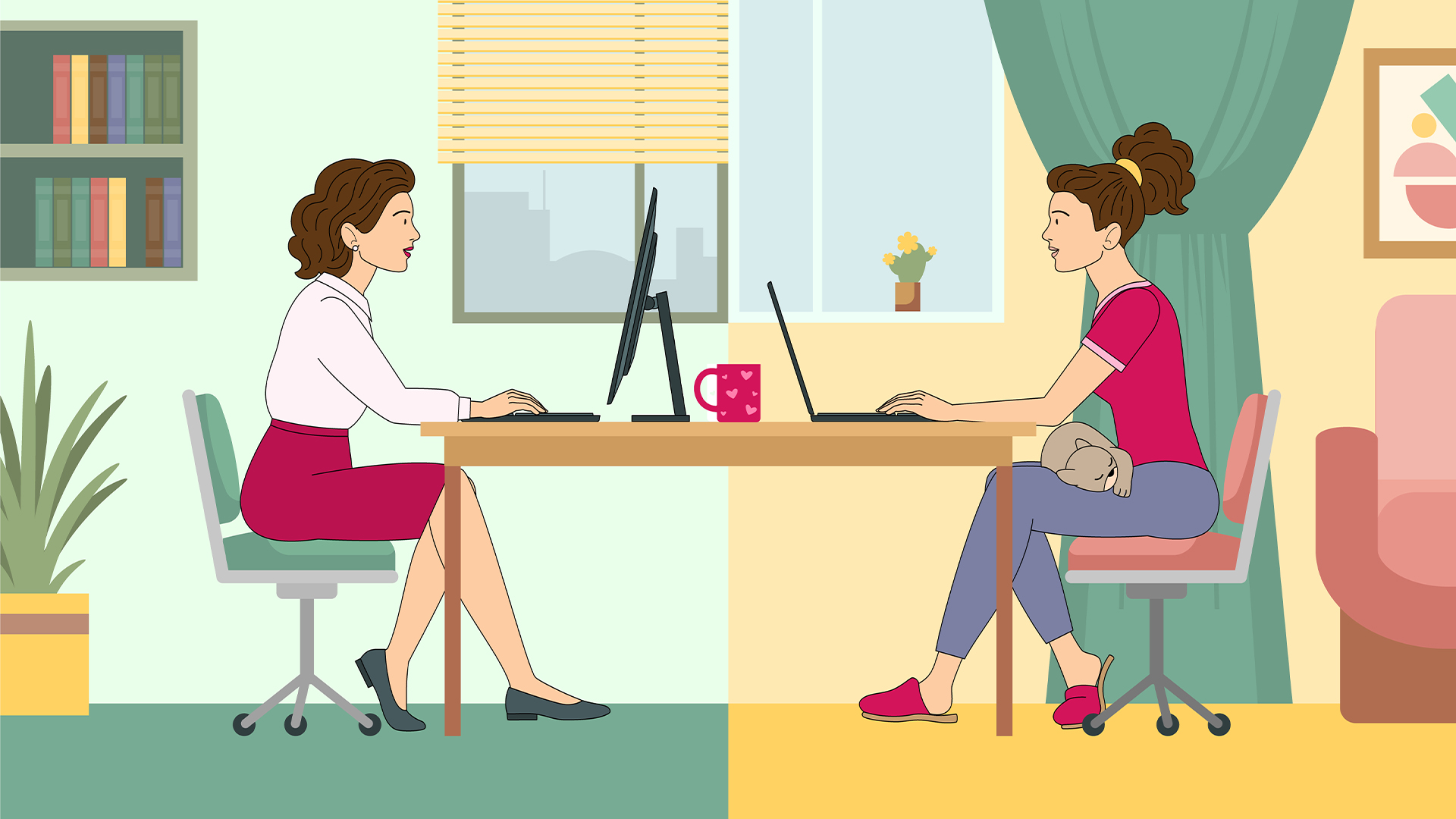The cultural changes of agile working
Moving to the office of the future isn't just about adopting new tools, it's about adopting new mindsets.

Part of Dennis' move to being an agile company involves moving to new client devices and office hardware, but an equally large part of it is a wider cultural change. Often, this can be the more difficult element of digital transformation - after all, no amount of CapEx is going to change employees' habits overnight. We spoke to Dennis CTO Paul Lomax about the role cultural considerations played in the company's move to the office of the future.'
One of the biggest changes in the new building is that people no longer have their own desks. Has this been hard for staff to adjust to?
That's the big cultural change, and it will be a bit of a mindset change. When we started showing people floorplans, the first thing they wanted to do is start putting names on seats, and it's quite a hard thing to get your head around. Partly because also, people are going 'okay, how many seats have I got, how many staff have I got, what's my agility,' trying to work out how they're going to fit people in. but it's kind of approaching it slightly wrong.
Everyone's going to have a locker, so clearly you need a floor on which your locker's going to be, so you need a 'home base.' If your home base is the ground floor, for example, your locker will be on the ground floor, and that will be predominantly where you probably sit every day and where your team will gather, generally speaking, but you can sit on any floor if you want. I mean, you can go and sit next to the finance director if you really want - until he gives up and builds an office.
There's definitely the flexibility there to be wherever you want. We're not going full hot-desking in the sense of saying 'you will have to find a seat anywhere in the building, first come, first served', it's more 'this is your team's floor.' The average floor's got 35 workstations on it, so if you sit on a different bank of desks, it's not like you're a million miles away; you can't be more than three desks away, really.
So I hope that people will be more flexible than to go 'this is _my_ team's bank of desks, and you cannot sit on it', cause frankly, it doesn't divide neatly. There's rows of six desks; if you've got a team of eight, you're gonna have to have some people sitting on a different bank. If you've got a team of two, you're gonna have to share.
Some staff members have expressed concern that there won't be enough room in the building to house everyone - what's the capacity like in practical terms?
In terms of workstations, there's room for about 80% of the workforce. So if everyone wanted a workstation with a monitor, keyboard and mouse, then it's 80% - if everyone's in on the same day. But there's two things: one is that you never, ever get 100% of people in the office. So, forgetting whether or not people are out to see clients, or walking around or whatever, there's holidays, sickness - we've got 28 days holiday a year, plus bank holidays, plus people on sabbatical and all sorts, right? So you can pretty much knock 10% off just on holidays, sickness and whatnot. And the other 10%, people are in and out of the building, working from home and whatever.
But there are enough places to work in the building for everyone and more, because we also have quite a large freelance contingent who are in our building. The day the magazines go to production, they've got production editors in and designers in, often you've got interns and graduates, we've got freelance developers coming in and out every now and then, depending on peak projects. We can have as much as an extra twenty to forty people in the building.
How has moving to the new building allowed Dennis to experiment with different working environments?
There's lots of different types of places to work. There's your traditional workstation, but you've also got focus areas. There's a couple of dozen one and two-person rooms, which are like small offices - they're actually quite spacious. You can use it either for two people working on a project together, possibly three if you want to, but you could also just have a meeting in there, one-to-one, you know, chat, catch-up, that kind of thing.
We've intentionally left those blank, if you like. We debated about putting a screen and a keyboard in, but actually, we wanted it to be a flexible space so if you just want to make a phone call, you want to do some old-fashioned editing on a piece of paper, you can use it for whatever you want. You can go and work in those spaces, you can book them.
We're trying to discourage people for booking them for more than a few hours, we don't want people sitting in there all day, but if a salesperson really needs to concentrate on getting a deck out for a proposal, sometimes you just want to sit in a quiet room and work on that. At the moment, we've got people booking an eight-person room for one person sitting in there to write a proposal, to get some peace and quiet. It's not a good use of space.
How does the new working setup reflect the changing needs of the business?
Actually, what we've found, if you take a long, hard look at Dennis, is that we've become much more integrated as a business. In the olden days, with print, it was very siloed. Each editorial team had its own little silo, with their own deadlines to worry about, and never spoke to anyone else; they saw themselves as being their own magazine first and Dennis a distant second.
What's changed - particularly with the digital - is that teams are more integrated. So, Alphr, Expert Reviews and IT Pro share resource, and they work very closely with The Week, and they work very closely with sales, and there's much more interoperability and intermingling of teams.
Sign up today and you will receive a free copy of our Future Focus 2025 report - the leading guidance on AI, cybersecurity and other IT challenges as per 700+ senior executives
ITPro is a global business technology website providing the latest news, analysis, and business insight for IT decision-makers. Whether it's cyber security, cloud computing, IT infrastructure, or business strategy, we aim to equip leaders with the data they need to make informed IT investments.
For regular updates delivered to your inbox and social feeds, be sure to sign up to our daily newsletter and follow on us LinkedIn and Twitter.
-
 Trump's AI executive order could leave US in a 'regulatory vacuum'
Trump's AI executive order could leave US in a 'regulatory vacuum'News Citing a "patchwork of 50 different regulatory regimes" and "ideological bias", President Trump wants rules to be set at a federal level
-
 TPUs: Google's home advantage
TPUs: Google's home advantageITPro Podcast How does TPU v7 stack up against Nvidia's latest chips – and can Google scale AI using only its own supply?
-
 Infosys co-founder Narayana Murthy called for a 70 hour week last year — now he says that’s not enough
Infosys co-founder Narayana Murthy called for a 70 hour week last year — now he says that’s not enoughNews Murthy thinks longer hours akin to China’s '996' approach are the key to success
-
 Microsoft could be preparing for a crackdown on remote work
Microsoft could be preparing for a crackdown on remote workNews The tech giant is the latest to implement stricter policies around hybrid working without requiring a full five days in the office
-
 IT professionals aren’t budging on flexible work demands – and more than half say they’ll quit if employers don’t meet expectations
IT professionals aren’t budging on flexible work demands – and more than half say they’ll quit if employers don’t meet expectationsNews Analysis from Randstad shows 40% of UK-based IT pros have quit over a lack of flexible work options, while 31% of workers globally have done the same.
-
 HP’s sustainability drive is paying off for channel partners
HP’s sustainability drive is paying off for channel partnersNews Channel partners that bought into HP’s sustainability program saw sales increase as customers react positively
-
 ‘We think that selling everything helps the customer’: HP wants to supercharge its partner program to support a new market strategy
‘We think that selling everything helps the customer’: HP wants to supercharge its partner program to support a new market strategyNews HP has enhanced its partner program to encourage channel partners to sell its entire range of products and solutions.
-
 'The tide seems to be turning towards office attendance': 64% of hybrid business leaders want staff back in the office – but many worry that enforcing RTO mandates will drive employees away
'The tide seems to be turning towards office attendance': 64% of hybrid business leaders want staff back in the office – but many worry that enforcing RTO mandates will drive employees awayAnalysis Many UK business leaders want their staff back in the office more frequently, but they’re scared to implement return to office (RTO) mandates in fear of worker revolts.
-
 Employees are dead set on flexible working arrangements – three quarters would turn down a role that didn't offer hybrid options as work-life balance becomes more important than pay
Employees are dead set on flexible working arrangements – three quarters would turn down a role that didn't offer hybrid options as work-life balance becomes more important than payNews New research shows workers are increasingly demanding flexible working arrangements from employers.
-
 Nearly half of tech workers are seeking new roles – declining employee benefits and reduced flexible working options have staff looking elsewhere
Nearly half of tech workers are seeking new roles – declining employee benefits and reduced flexible working options have staff looking elsewhereNews While salaries are rising for tech workers, other benefits are in decline, leading to a fall in job satisfaction

